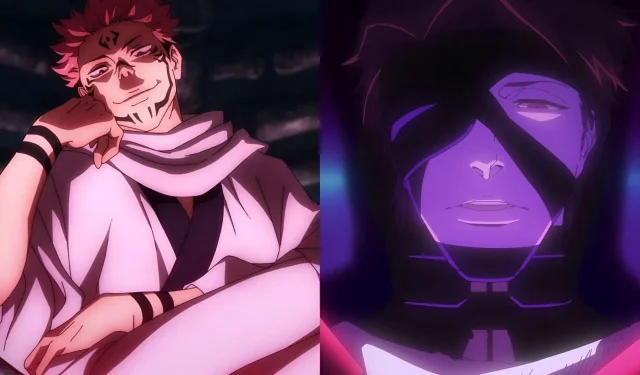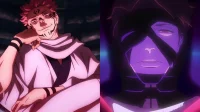In the vibrant realm of shonen anime and manga, few antagonists rival the chilling impact of Sosuke Aizen in Tite Kubo’s acclaimed series, Bleach. While the extensive backstory of Sukuna in Jujutsu Kaisen has driven discussions about the necessity of such depth for establishing a villain’s might, Aizen’s character challenges this notion. His arc illustrates that a strong villain can be crafted without a thorough historical context.
The Essence of Malevolence: Aizen as a Study in Strategy
Aizen expertly wields his aura and strategic intellect to establish dominance, well before the term “aura farmer”became commonplace in discussions about anime villains. His character evolution prompts intriguing considerations regarding the developmental choices available to Gege Akutami for Sukuna.
From his first appearance, Aizen proves to be a master of deception. Initially, he is depicted as the kind and scholarly captain of Squad 5, making his eventual betrayal all the more shocking due to its flawless execution. Aizen’s villainy is characterized by his methodical disassembly of the Soul Society’s hierarchy instead of relying on a tragic backstory.
Kubo’s intentional decision to keep details about Aizen’s past obscured highlights a storytelling approach that favors action-oriented demonstration over elaborate exposition. This is particularly evident when Aizen reveals his true form, effortlessly decimating several captain-level Soul Reapers, all while maintaining an air of calm confidence—no flashbacks necessary.
His cerebral capabilities combined with his combative ferocity instill a profound level of intimidation, resonating through each of his subsequent appearances. Thanks to Aizen’s tactical genius and the intense spiritual pressure he exudes, viewers attain a comprehensive understanding of his character without the need for a deep dive into his history.
Contrasting Approaches: Aizen vs. Sukuna in Villain Crafting
The methodologies behind villain development differ notably between Bleach and Jujutsu Kaisen. Although Sukuna initially mirrors Aizen’s format as a mysterious and overwhelmingly powerful figure, Akutami ultimately chose to enrich Sukuna’s narrative with a flashback set in the Heian era.
This addition adds complexity to Sukuna’s persona, yet many fans argue that it was not essential in solidifying his fearsome reputation. Aizen epitomizes the archetype of the “aura farmer”, illustrating his supremacy through deliberate actions rather than through exposition of his past.
His memorable assertion, “The chess piece doesn’t realize it’s being played,”encapsulates his character, revealing that he is always several moves ahead of both rivals and the audience. His capacity to generate suspense and command respect derives from his actions, negating the need for a comprehensive backstory.
Conversely, Sukuna initially establishes his presence through sheer force, casually dismantling special grade curses while exhibiting disdain towards contemporary sorcerers. However, a lingering question remains: did the additional context from his historical flashback enrich or undermine the tension he originally built?
Final Thoughts
The arc of Aizen from Bleach underscores the idea that the most compelling villains may thrive in an aura of mystery. His calculated charm and intellectual superiority have set a precedent that numerous subsequent antagonists attempt to emulate.
Aizen’s enduring legacy as one of anime’s most iconic villains—crafted without a detailed origin narrative—serves as a testament to the power of leaving certain elements unspoken. As fans continue engaging in discussions regarding character portrayal in series like Jujutsu Kaisen, Aizen remains a shining example that an “aura farmer”can command presence through present actions, without digging into the past for validation.


